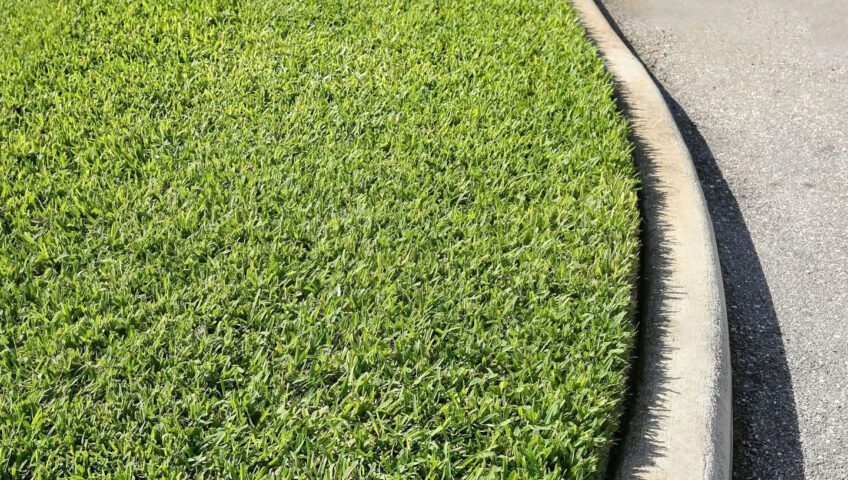St. Augustine grass, known for its lush and dense turf, is a popular choice for lawns here on the Space Coast. It derives its name from the Florida city of St. Augustine, where the turf grass was first recognized as a distinct variety in the United States. Native to such regions as central and southeastern North America and Central America, the grass flourishes on sea coasts worldwide.
Rather than planting seeds, homeowners must introduce this grass via vegetative propagation. That means using plant parts such as underground stems that split off into new shoots. The grass comes in laterally across a lawn.
As is the case with most things, there are advantages and disadvantages to having this grass type in your yard.
Hardy and lush
On the plus side, St. Augustine grass has a high degree of tolerance for drought and heat. It performs well in hot and dry conditions, making it suitable for regions with intense sunlight and limited rainfall. The popular grass also provides a lush appearance, producing a green to blue-green dense turf. Homeowners with St. Augustine grass are likely to have an aesthetically pleasing lawn.
Higher prices, higher maintenance
On the other side of the ledger, St. Augustine grass tends to be more expensive compared to other types of grass such as centipede grass.
St. Augustine grass can spread aggressively, potentially encroaching on garden beds and other landscaped areas. While moderate in some aspects, this grass requires regular fertilization, watering and pest control to maintain its health and appearance. Despite its drought tolerance, St. Augustine grass needs substantial watering to remain lush, particularly during dry periods.
Pests and viruses
One serious problem facing St. Augustine grass is the sugarcane mosaic virus (SMV). This is a virulent form of lethal viral necrosis (LVN), which afflicts turf in a number of Florida counties. One sign of infection is a series of yellow patches and dead spots on the lawn, as well as streaks on individual blades. There is currently no treatment that can either prevent the disease or effectively arrest its spread. Re-sodding is the only way to fix the problem.
This grass type is also prone to pest infestations, necessitating vigilant pest management. Among the pests most dangerous to St. Augustine grass is the chinch bug. Lawns sustain damage from these insects in both nymph and adult stages as they use their mouth parts to pierce the blades and draw out juices. They can have a devastating effect on people’s yards. This is where Slug-A-Bug helps homeowners around Brevard County. You can call us for a free consultation at (321) 259-7844 if you suspect insect pests may be ruining your turf.
Conclusion
In summary, while St. Augustine grass offers several benefits, such as heat tolerance and a lush appearance, it also comes with maintenance challenges and potential issues with pests and disease. Homeowners should weigh these factors to determine if it’s the right choice for their lawn.
